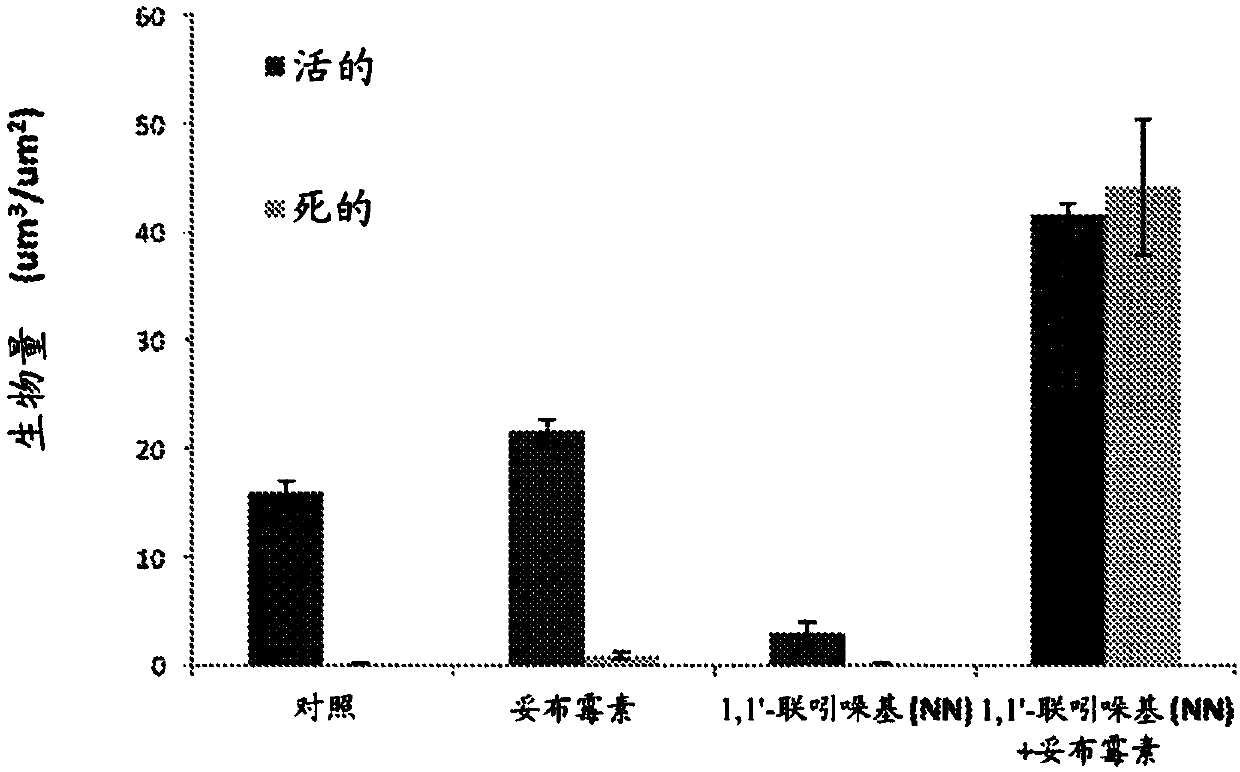Quorum sensing inhibitors for biofilm inhibition
A biofilm and hull technology, applied in biocides, animal repellents, plant growth regulators, etc., can solve problems such as unsatisfactory
- Summary
- Abstract
- Description
- Claims
- Application Information
AI Technical Summary
Problems solved by technology
Method used
Image
Examples
Embodiment 1
[0086] Example 1 Biofilm inhibition properties of NN and DIV.
[0087] Biofilms of P. aeruginosa and A. baumannii grown on glass slides were determined using confocal scanning laser microscopy (CSLM) (Figure 1). Correspondingly, the densities of biofilms before and after NN and DIV treatments were measured. Both treatments caused a decrease in the density of attached cells, although NN was most effective for Pseudomonas aeruginosa. DIV and NN treatments had little effect on the density of Acinetobacter baumannii. Both treatments caused negligible bacterial mortality as they were not different from the controls.
[0088] The dynamic growth conditions in the flow cell system are considered to be representative of the real conditions in humeral bone tissue, where pathogens thrive in an enriched environment. Studies of the effect of inhibitor compounds on bacteria in terms of structured biofilm disruption showed that both compounds had similar broad anti-biofilm effects on P. a...
Embodiment 2
[0091] Example 2 Biofilm inhibitory properties of 3,3'-diindolylmethane (DIM)
[0092] In addition, we tested the antibiofilm properties of the well-studied anticancer compound 3,3'-diindolylmethane (DIM), a metabolite found in cruciferous vegetables. The inhibitory effect of DIM on biofilm formation was studied with different clinical pathogens under static conditions. Biofilms formed by Acinetobacter baumannii and Pseudomonas aeruginosa were further tested in a dynamic flow cytometry system, where biofilm inhibition levels of 86% and 76%, respectively, were obtained. The combined treatment with tobramycin and DIM showed a significant percent inhibition of biofilm formation of 94%, indicating almost complete eradication of bacteria. In addition, the results also indicated that DIM could potentially inhibit the secretion of unique virulence factors of Pseudomonas aeruginosa. Further testing of hypothesized synergistic effects obtained by combining conventional antibiotics wi...
PUM
 Login to view more
Login to view more Abstract
Description
Claims
Application Information
 Login to view more
Login to view more - R&D Engineer
- R&D Manager
- IP Professional
- Industry Leading Data Capabilities
- Powerful AI technology
- Patent DNA Extraction
Browse by: Latest US Patents, China's latest patents, Technical Efficacy Thesaurus, Application Domain, Technology Topic.
© 2024 PatSnap. All rights reserved.Legal|Privacy policy|Modern Slavery Act Transparency Statement|Sitemap



